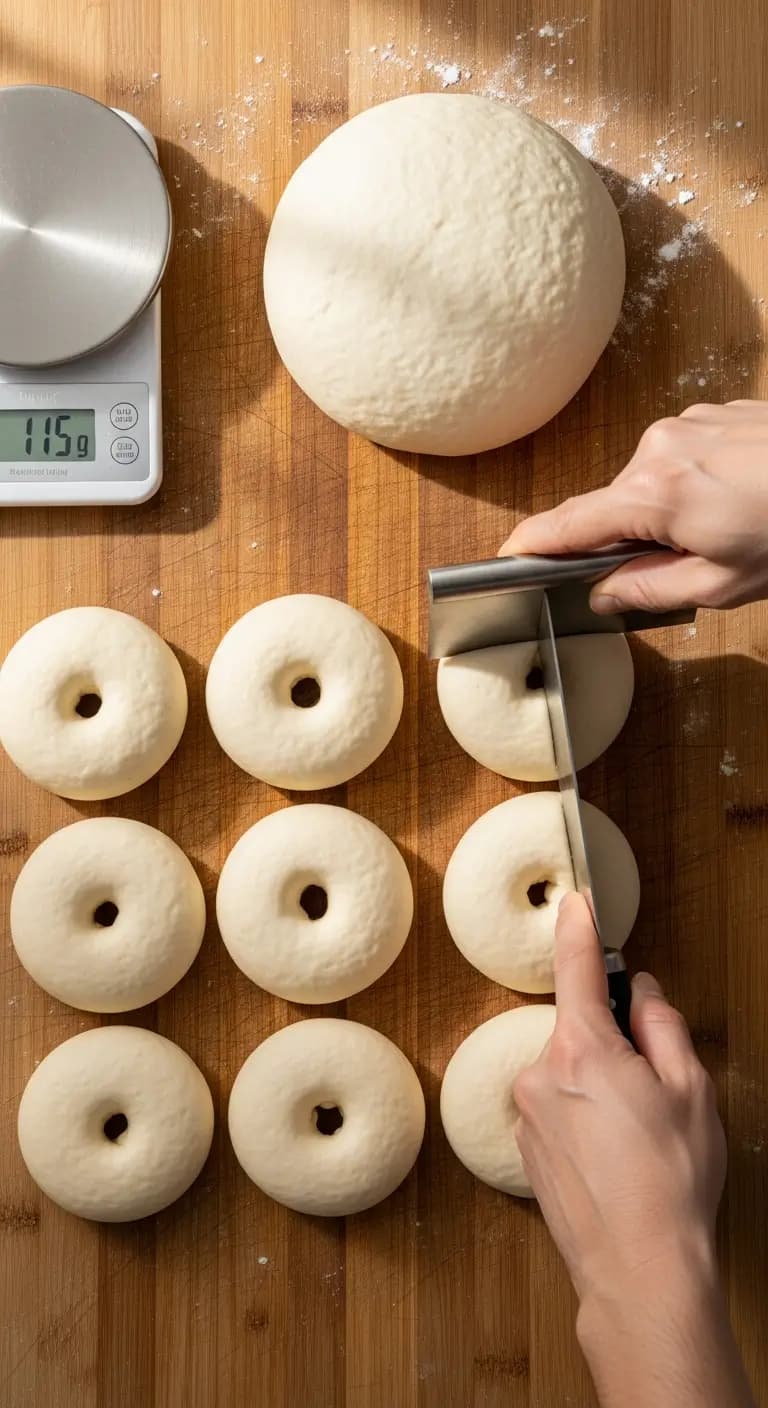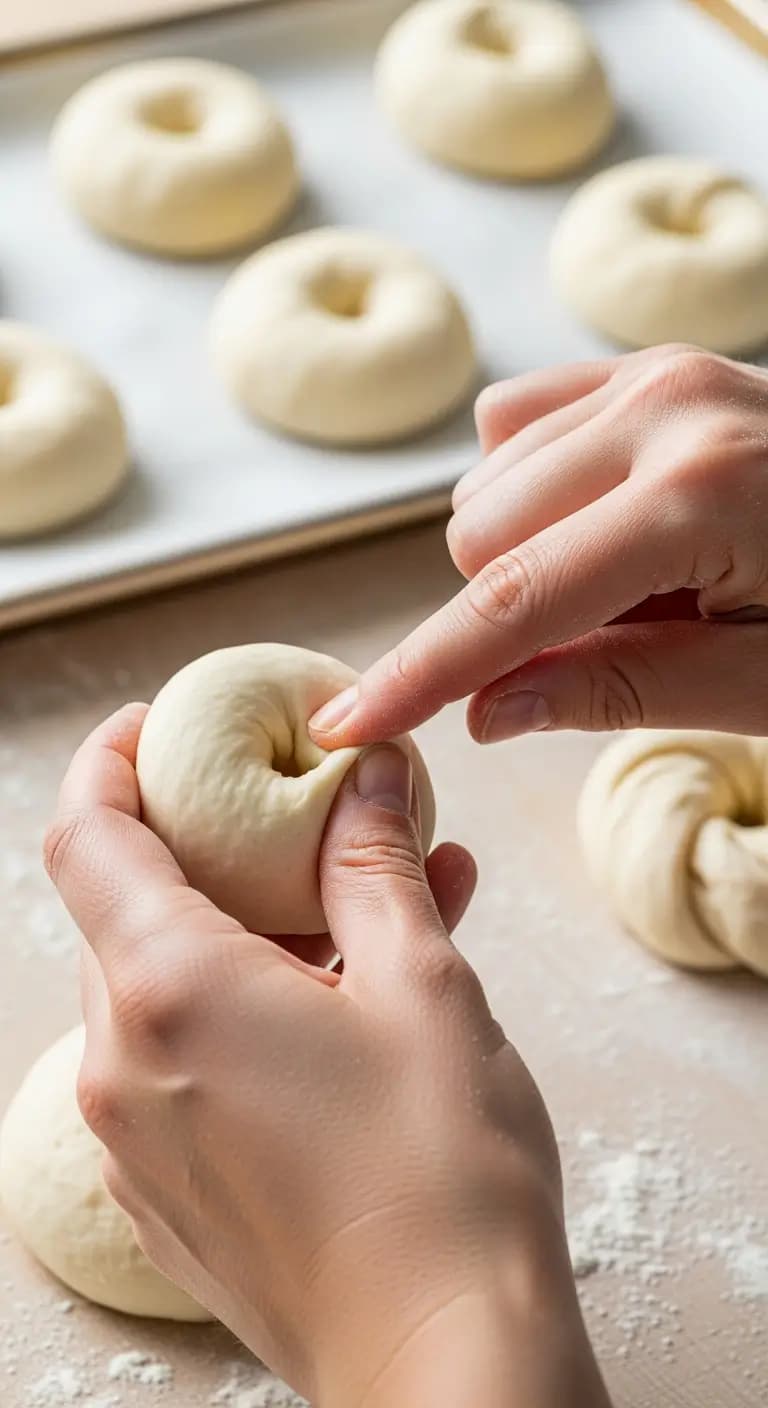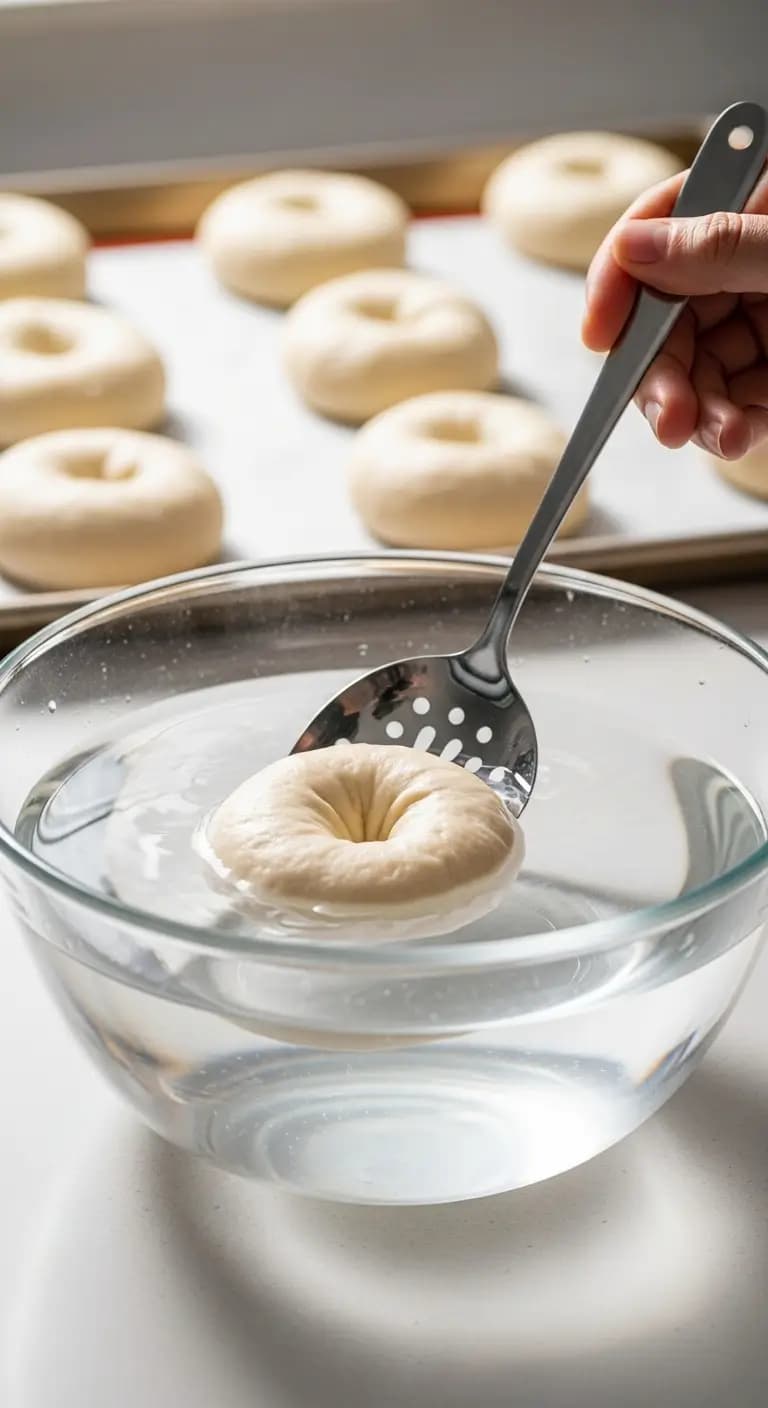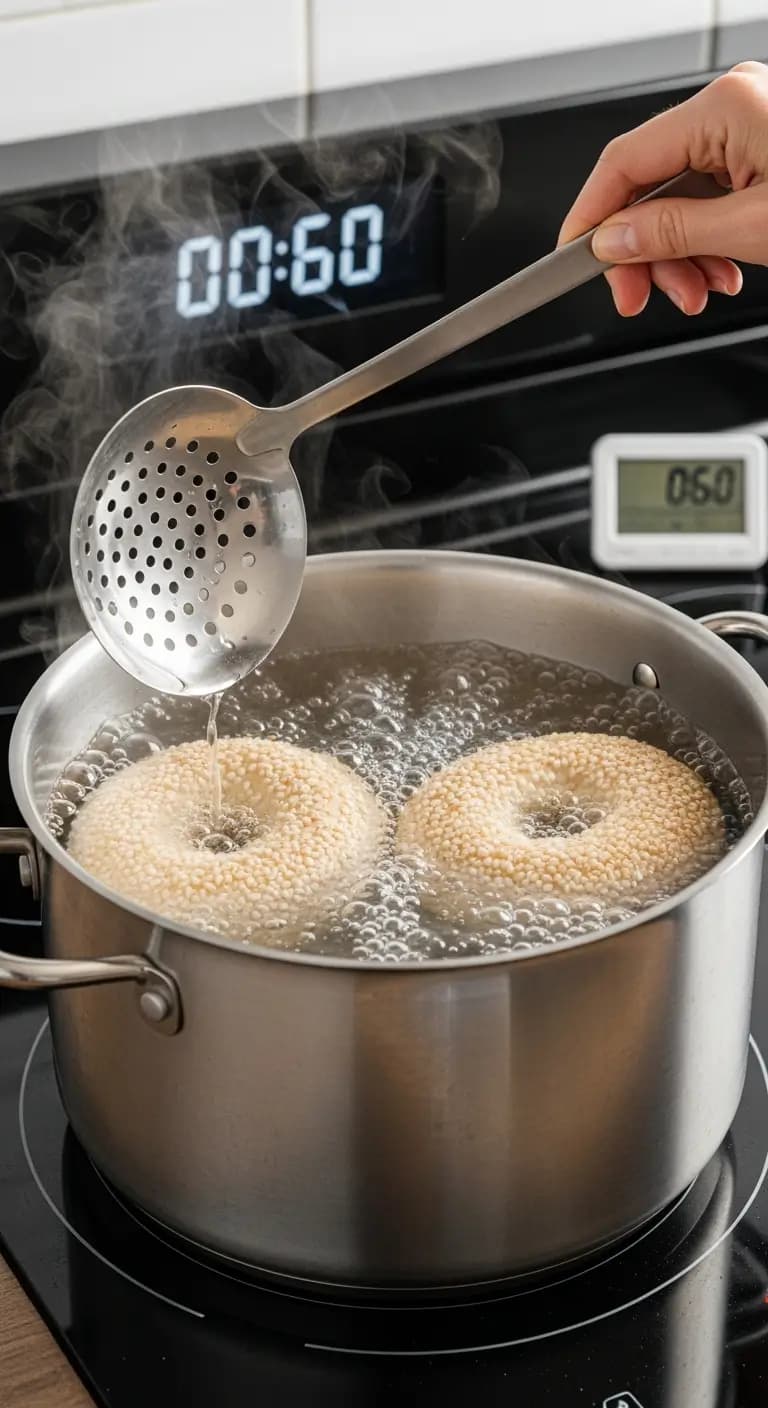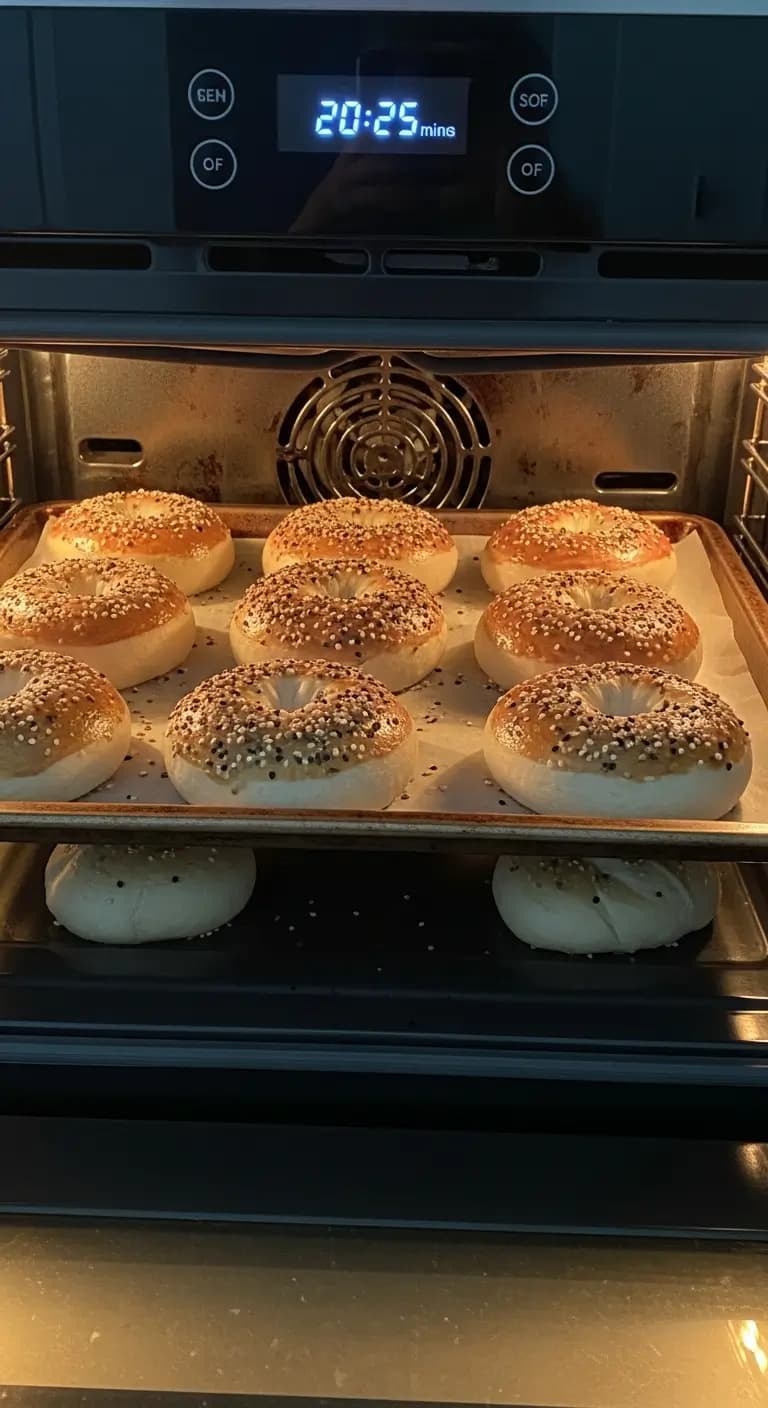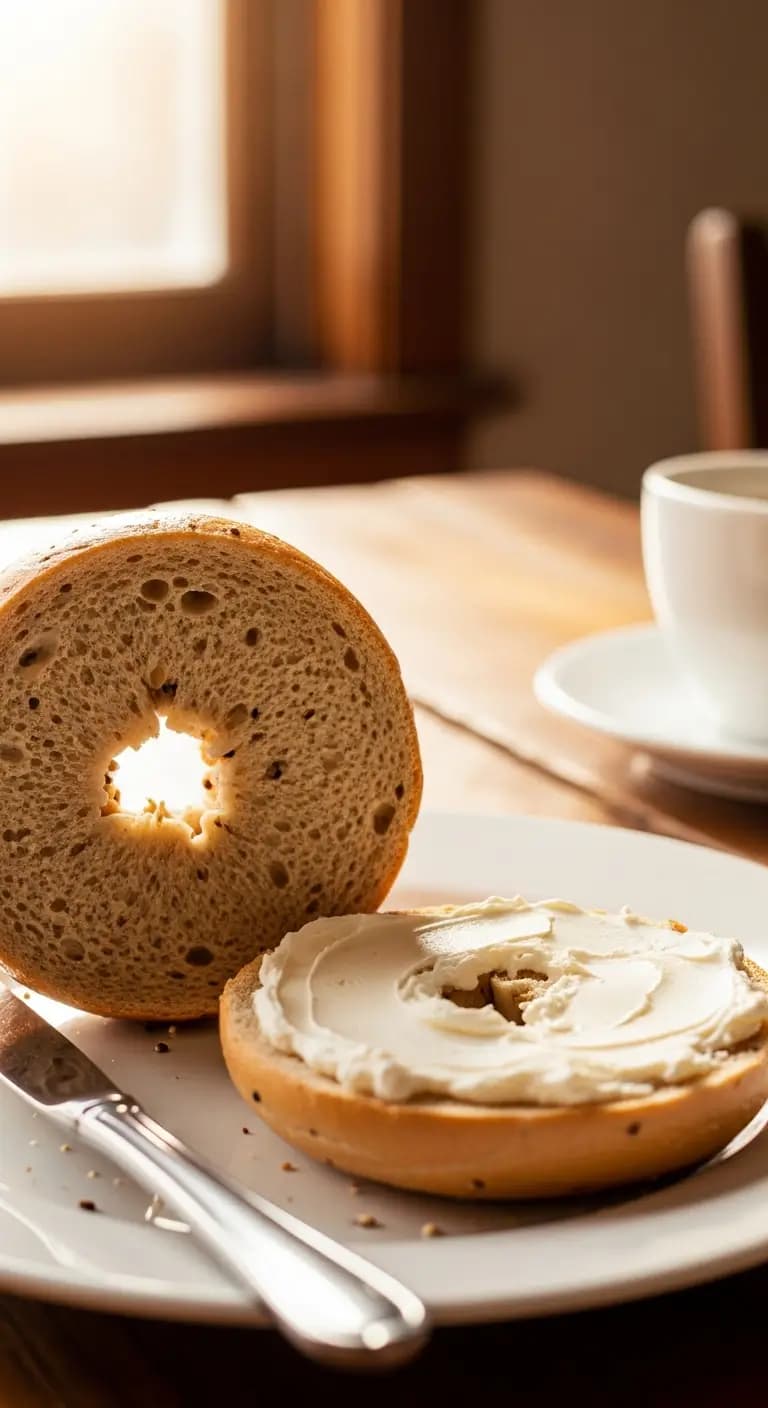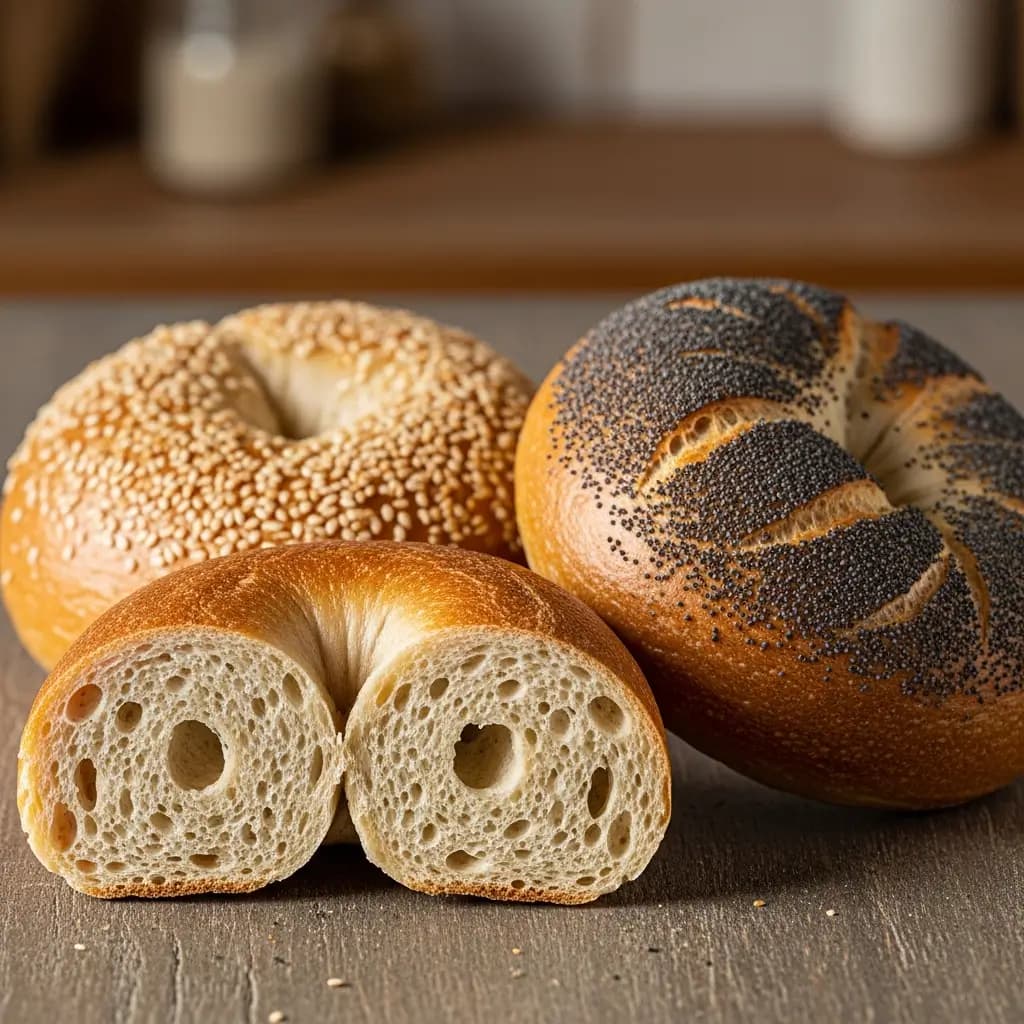Easy Homemade Sourdough Bagels Recipe (Chewy, Dense & Delicious!)
This post may contain affiliate links.
Jump to a Section:
Introduction
There’s something magical about pulling a tray of golden, perfectly chewy homemade bagels from your oven. When I first attempted sourdough bagels, I was nervous—bagels have a reputation for being tricky. But after that first bite of a warm, tangy, impossibly chewy bagel with a shiny, golden crust, I realized this recipe was easier than I expected and miles better than anything I could buy.
If you’re searching for the best easy homemade sourdough bagels recipe, you’ve just discovered it. These bagels deliver everything you crave: that signature dense, chewy texture that authentic bagels are famous for, a shiny, golden-brown crust that crackles when you bite, subtle sourdough tang that adds depth and complexity, and professional-looking results that will impress everyone. The sourdough discard adds incredible flavor while making the dough more manageable and forgiving than traditional recipes.
Best of all, while these require some planning (overnight fermentation), the hands-on time is minimal. Make the dough one evening, shape the next morning, and you’ll have fresh, bakery-quality bagels for brunch. Once you master this recipe, you’ll never buy store-bought bagels again.
Why Sourdough Makes Better Bagels
Adding sourdough to bagel dough isn’t just trendy—it genuinely improves these New York classics:
-
- Superior Flavor Complexity: Traditional bagels can taste one-dimensional. The sourdough adds layers of tangy, slightly fermented notes that complement everything from cream cheese to lox. The depth is remarkable.
-
- Improved Digestibility: The natural fermentation begins breaking down complex starches and gluten, making sourdough bagels easier on your digestive system than commercial yeast-only versions.
-
- Better Texture Development: Sourdough creates a more extensible dough that’s easier to shape. The fermentation develops gluten networks that give bagels their characteristic chew without being tough.
-
- Extended Freshness: The natural preservative qualities of fermented sourdough mean these bagels stay fresh longer than regular bagels—still soft and chewy on day three.
-
- More Authentic Taste: Before commercial yeast became standard, traditional bagels were naturally leavened. Sourdough brings you closer to that authentic, old-world flavor profile.
- Zero Waste Baking: This is the perfect way to use sourdough discard. Transform what would be waste into breakfast perfection.
Ingredients for Sourdough Bagels
For the Bagel Dough:
- Sourdough Discard or Active Starter (200g / 1 cup): Either works perfectly. Discard adds tang; active starter provides slight extra rise.
- Bread Flour (500g / 4 cups): High protein content is essential for chewy texture. Don’t substitute all-purpose.
- Water (240ml / 1 cup): Room temperature, filtered if possible.
- Honey or Barley Malt Syrup (2 tablespoons): Adds sweetness and helps create that shiny crust.
- Salt (2 teaspoons): Essential for flavor and gluten development.
- Instant Yeast (1½ teaspoons, optional): Guarantees rise; can be omitted if using very active starter.
For Boiling:
- Water (8 cups / 2 liters): For the boiling bath.
- Baking Soda (2 tablespoons): Creates alkaline environment for shiny, golden crust.
- Honey or Malt Syrup (2 tablespoons): Adds sweetness and enhances browning.
Toppings (Optional):
- Everything Bagel Seasoning: Sesame seeds, poppy seeds, dried garlic, dried onion, salt
- Sesame Seeds: White or black
- Poppy Seeds: Classic topping
- Coarse Sea Salt: Simple and elegant
- Dried Onion Flakes: Savory option
- Cinnamon Sugar: For sweet bagels
- Egg Wash: 1 egg beaten with 1 tablespoon water (for shine and helping toppings stick)
The Boiling Process Explained
Why Do We Boil Bagels?
The boiling step is what distinguishes bagels from regular bread rolls. Here’s the science:
Creates the Crust: Boiling gelatinizes the starches on the surface, creating that signature shiny, slightly chewy exterior that cracks when you bite.
Limits Rise: The boiling sets the exterior before baking, which limits oven spring. This creates the dense, compact crumb that bagels are famous for.
Enhances Browning: The alkaline environment from baking soda promotes Maillard reactions, creating that beautiful golden-brown color and complex flavor.
Unique Texture: The combination of boiled exterior and baked interior creates a texture you simply can’t achieve without this step.
Boiling Variables
Water Temperature: A gentle simmer (not rolling boil) is ideal. Too vigorous and bagels can deflate or distort.
Boiling Time:
- 60 seconds per side: Standard, produces moderately chewy crust
- 30 seconds per side: Thinner crust, softer bagels (good for kids)
- 90 seconds per side: Very chewy, thick crust (New York style)
Baking Soda Amount:
- 2 tablespoons: Standard, creates nice browning
- 1 tablespoon: Less alkaline, lighter color
- 3 tablespoons: Very alkaline, very dark color (use cautiously)
Honey/Malt: Adds sweetness and promotes browning. Traditional NYC bagels use barley malt syrup.
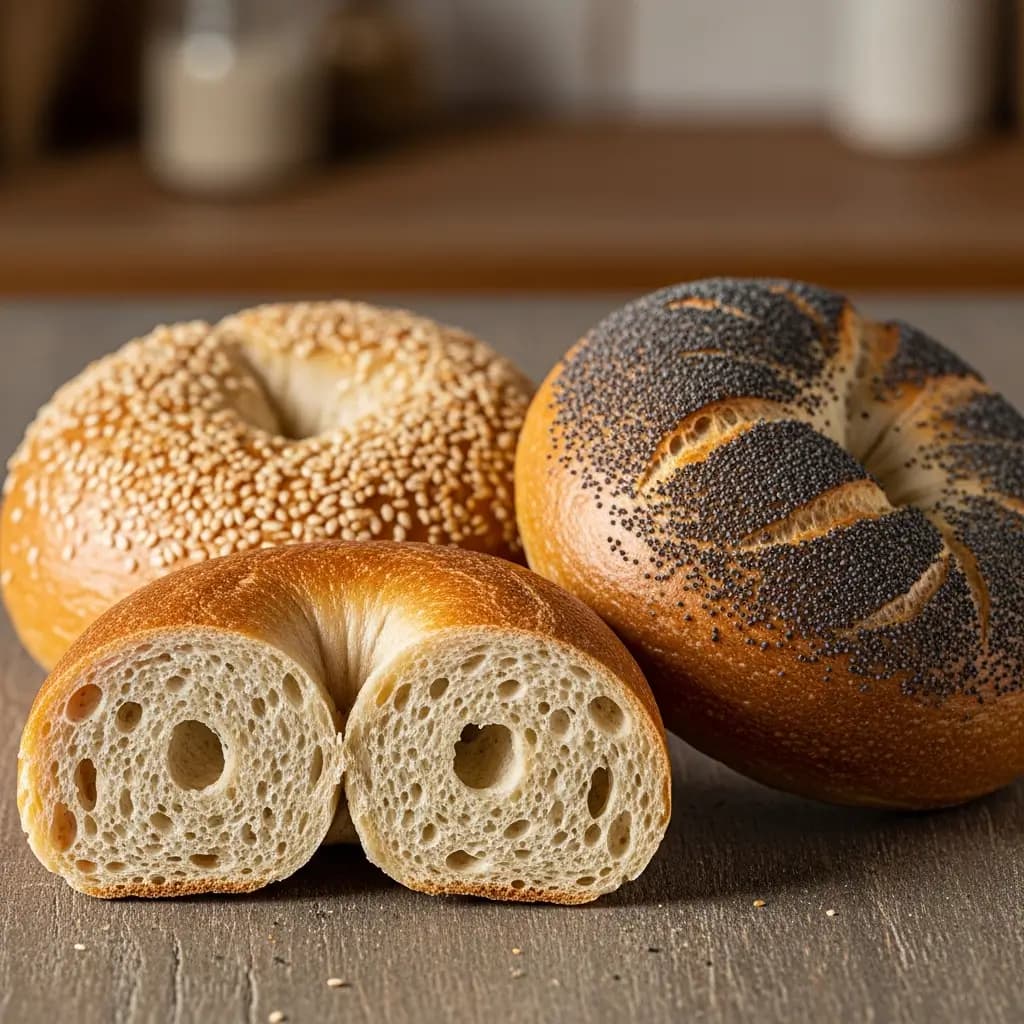
Step-by-Step Instructions
Step 1: Mix the Dough (Evening, Day 1)
In a large mixing bowl or stand mixer, combine sourdough discard, water, honey, and instant yeast (if using). Stir until mostly dissolved. Add the flour and salt. Mix with a wooden spoon or dough hook on low speed until a shaggy dough forms. The dough will be quite stiff—this is correct for bagels. If using a stand mixer, knead on medium speed for 8-10 minutes. By hand, turn onto a work surface and knead for 10-12 minutes until very smooth, tight, and elastic.
The dough should be firm and smooth, not soft or sticky. It should barely be tacky to touch. This is much stiffer than bread dough—that firmness creates the dense, chewy texture.
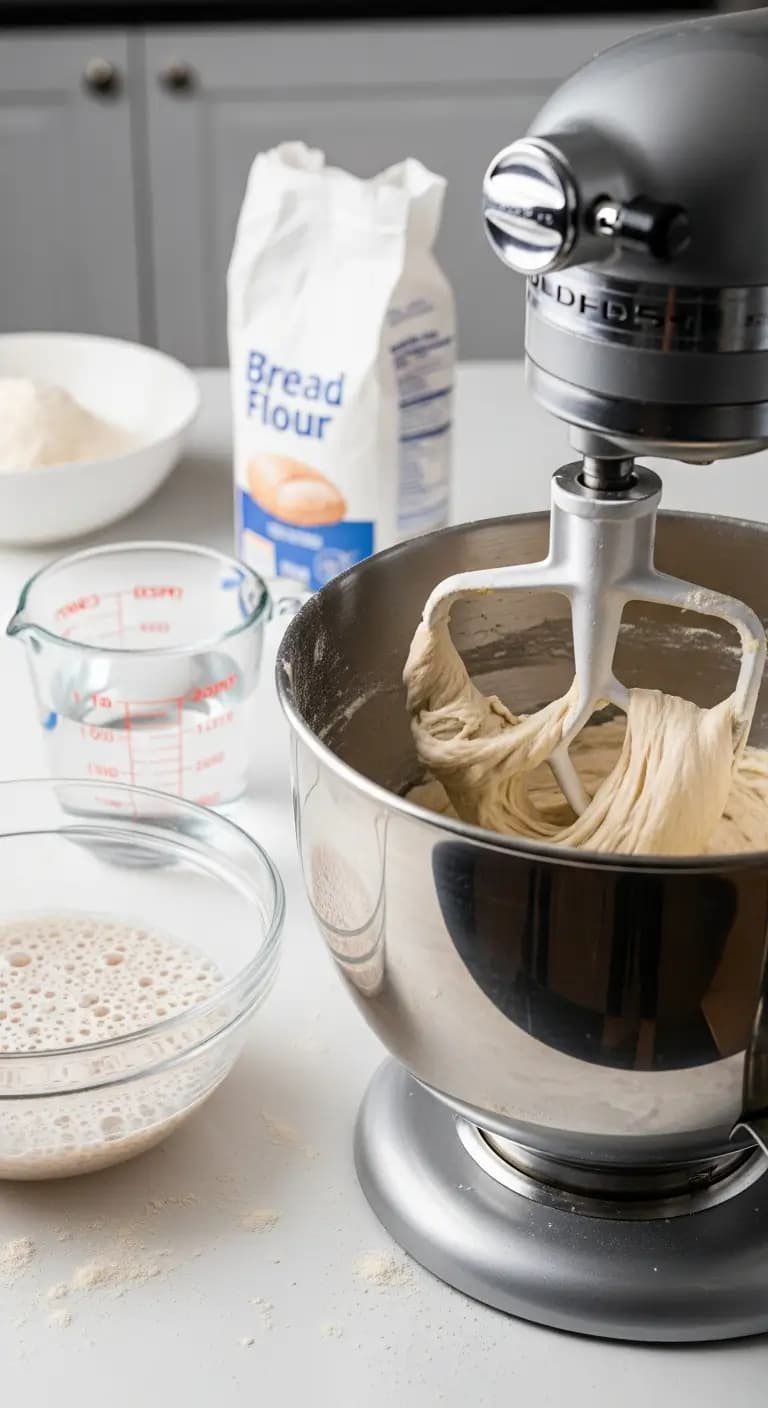
Step 2: First Rise / Bulk Fermentation (Overnight)
Form the kneaded dough into a tight ball. Place in a lightly greased bowl, cover tightly with plastic wrap or a damp towel. Refrigerate overnight (8-12 hours) or let rise at room temperature for 4-6 hours if you’re in a hurry (though overnight cold fermentation develops better flavor).
The dough won’t rise dramatically—maybe 30-50% increase. That’s normal for dense bagel dough. Don’t expect it to double like bread dough would.
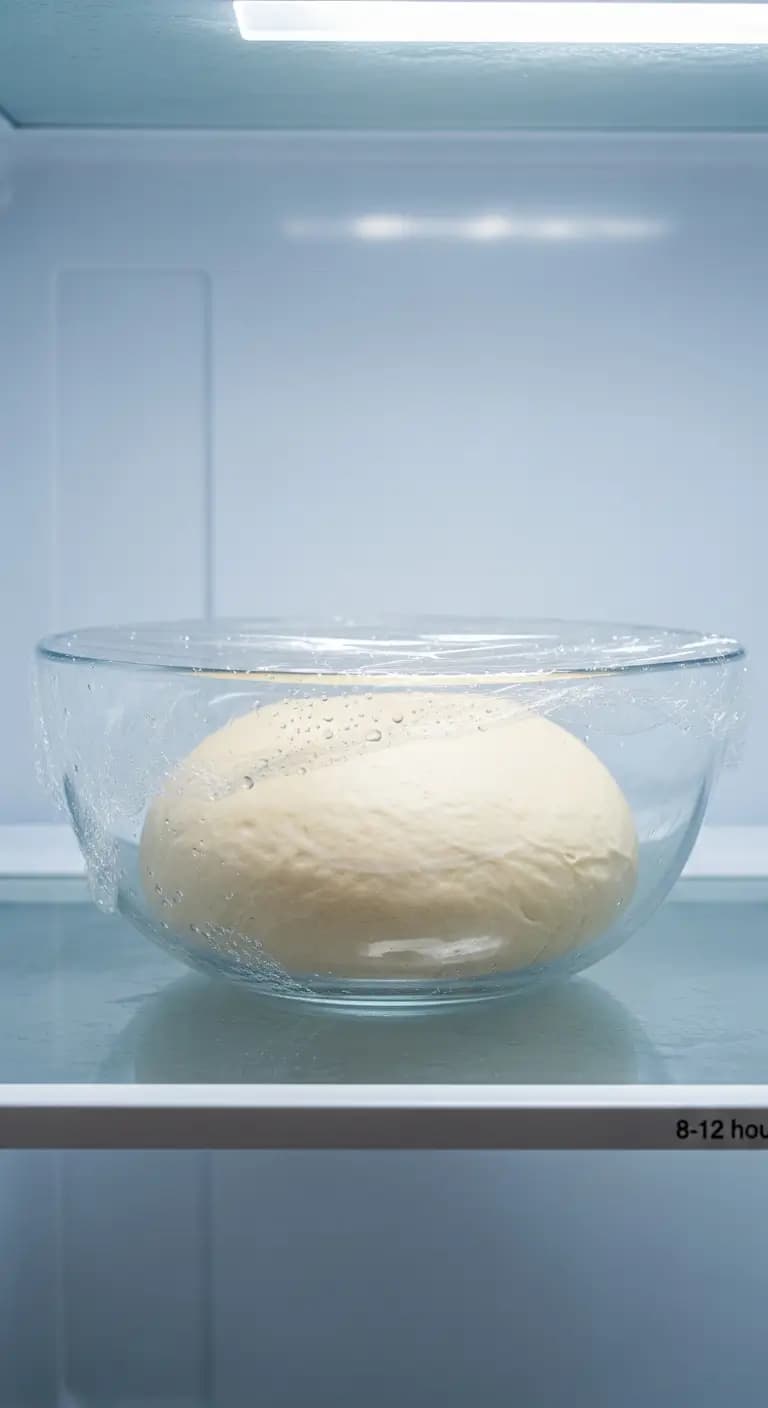
Step 3: Divide and Pre-Shape (Morning, Day 2)
Remove dough from refrigerator and let sit at room temperature for 30 minutes if very cold. Turn onto an unfloured work surface (no flour needed—you want friction for shaping). Divide into 8 equal pieces (about 115g each for large bagels, or 10 pieces for 90g medium bagels).
Roll each piece into a tight ball by cupping your hand over it and making circular motions. The friction against the counter creates surface tension. Cover shaped balls with a damp towel and rest 10-15 minutes.
Easy Homemade Sourdough Bagels Recipe (Chewy, Dense & Delicious!)
Equipment
- Stand mixer with dough hook (or mix by hand)
Ingredients
Instructions
- 1
Day 1 (Evening):
- 2
In large bowl or stand mixer, combine sourdough discard, water, honey, and yeast. Stir until mostly dissolved.
- 3
Add bread flour and salt. Mix with wooden spoon or dough hook on low speed until shaggy dough forms.
- 4
Knead: Stand mixer on medium speed for 8-10 minutes, or by hand for 10-12 minutes, until very smooth, tight, and elastic. Dough should be stiff and barely tacky.
- 5
Form into tight ball, place in lightly greased bowl, cover tightly. Refrigerate overnight (8-12 hours).
- 6
Day 2 (Morning):
- 7
Remove dough from fridge, let sit 30 minutes if very cold. Divide into 8 equal pieces (about 115g each).
- 8
Roll each piece into tight ball. Cover with damp towel, rest 10-15 minutes.
- 9
Shape bagels using poke-and-stretch method or rolling method. Make holes 2-2.5 inches in diameter. Place on parchment-lined baking sheet.
- 10
Cover loosely, let rise at room temperature 45-90 minutes. Perform float test: gently place one bagel in cool water. If it floats within 10 seconds, they're ready.
- 11
While proofing, fill large pot with 8 cups water, 2 tablespoons baking soda, 2 tablespoons honey. Bring to simmer. Preheat oven to 425°F (220°C).
- 12
Boil bagels in batches of 2-3 for 60 seconds per side (2 minutes total). Remove with slotted spoon and place on parchment-lined baking sheets.
- 13
Immediately brush with egg wash if using. Sprinkle with toppings, pressing lightly to adhere.
- 14
Bake 20-25 minutes, rotating pans halfway through, until deep golden brown.
- 15
Transfer to wire rack. Cool at least 15 minutes before slicing.
Notes
Bread flour is essential—don’t substitute all-purpose
Dough should be very stiff, not soft or sticky
Make holes much larger than you think necessary
Float test ensures proper proofing
Boiling step cannot be skipped
Bake until deep golden brown, almost darker than seems right
Slice bagels before freezing for easy toasting from frozen
Pro Tips for Perfect Bagels
Use Bread Flour, Not All-Purpose: The higher protein content (12-14%) in bread flour is essential for developing the gluten structure that creates chewy texture. All-purpose flour will make softer, less authentic bagels.
Keep the Dough Stiff: Bagel dough should be much firmer than regular bread dough. If it’s soft or sticky, add more flour one tablespoon at a time. Stiff dough = chewy bagels.
Make Holes Bigger Than You Think: Holes shrink dramatically during proofing and baking. Start with 2-2.5 inch holes or they’ll disappear completely.
Use the Float Test: This is the most reliable way to know if bagels are properly proofed. Under-proofed bagels sink and come out dense and doughy. Over-proofed bagels fall apart during boiling.
Don’t Skip the Overnight Fermentation: While you can make same-day bagels, the overnight cold fermentation develops significantly better flavor. The sourdough tang really shines through.
Boil Gently, Not Vigorously: A rolling boil can deflate bagels or distort their shape. Maintain a gentle simmer.
Bake Until Dark Golden: Don’t pull bagels too early. That deep golden-brown color (almost darker than seems right) develops incredible flavor. Pale bagels taste bland.
Steam for Extra Shine: For exceptionally shiny bagels, toss 3-4 ice cubes in the bottom of the oven when you first put bagels in. The steam enhances the shine.
Flavor Variations & Toppings
Classic Topping Combinations
Everything Bagels: Mix 2 tablespoons each: sesame seeds, poppy seeds, dried minced onion, dried minced garlic, plus 1 tablespoon coarse salt
Sesame: White or black sesame seeds, or a mix of both
Poppy Seed: Classic and simple
Onion: Dried minced onion or onion flakes
Garlic: Dried minced garlic
Salt: Coarse pretzel salt or sea salt flakes
Cinnamon Sugar: 3 tablespoons sugar mixed with 1 tablespoon cinnamon (for sweet bagels)
Asiago Cheese: Shredded asiago pressed onto tops before baking
Dough Variations
Whole Wheat Sourdough Bagels: Replace up to half the bread flour with whole wheat flour. Add 2-3 tablespoons extra water.
Cinnamon Raisin: Add 2 teaspoons cinnamon to dough and fold in 1 cup raisins after kneading. Top with cinnamon sugar.
Blueberry: Gently fold 1 cup dried blueberries into dough. Use honey in boiling water instead of baking soda for sweeter flavor.
Jalapeño Cheddar: Fold in ½ cup diced pickled jalapeños and 1 cup shredded sharp cheddar after kneading.
Chocolate Chip: Add 2 tablespoons cocoa powder to dough and fold in 1 cup chocolate chips. Top with cinnamon sugar.
Pumpernickel: Replace ¼ cup bread flour with rye flour, add 2 tablespoons cocoa powder and 1 tablespoon caraway seeds.
Storage and Freezing Instructions
Storing Fresh Bagels
Room Temperature: Store completely cooled bagels in a paper bag or bread box for 2-3 days. Don’t use plastic—it makes them soggy. They’ll gradually become chewier but are still delicious toasted.
Refrigerator: Not recommended. Refrigeration makes bagels stale faster due to retrogradation (starch crystallization).
Freezing (Best Method):
- Let bagels cool completely
- Slice bagels in half before freezing (easier to toast from frozen)
- Wrap each bagel individually in plastic wrap or place in freezer bags
- Freeze for up to 3 months
- Toast directly from frozen (no thawing needed)
Refreshing Day-Old Bagels
Oven Method: Wrap bagel in aluminum foil, place in 375°F (190°C) oven for 10-12 minutes. Unwrap, toast briefly under broiler for crispy exterior.
Steaming Trick: Run bagel under water briefly to wet the surface. Wrap in a damp paper towel and microwave 20-30 seconds. Finish in toaster for crispiness.
Toaster Method: Simply toast halved bagels. Even 2-3 day old bagels taste freshly baked when toasted.

